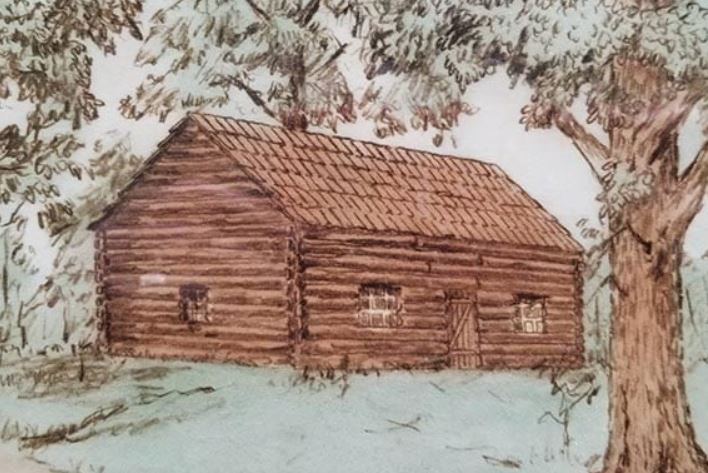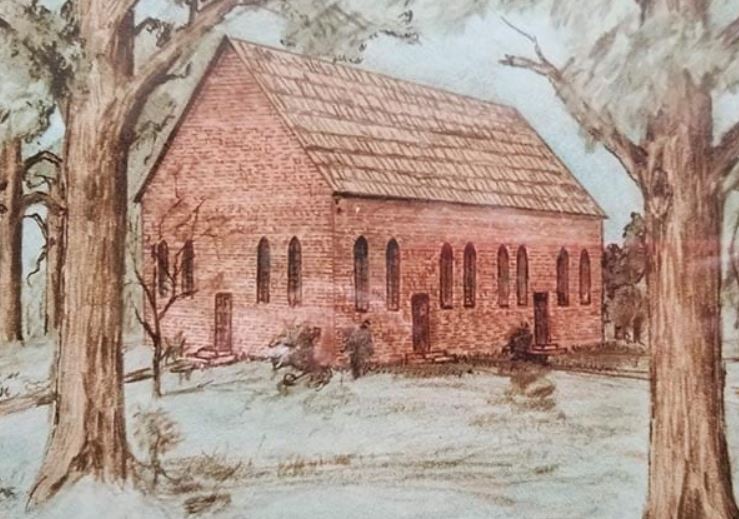

Background
The central figure in this historical revival account is the Irish-born Samuel Blair (1712-1751). Blair immigrated to New England during his youth and received his education at the rustic yet renowned Log College, a precursor to Princeton University.
At age 21 in 1733, Blair was licensed to preach as a Presbyterian minister. He conducted his ministry in various New Jersey towns, including Millstone, Cranbury, Middletown, and Shrewsbury.

Faggs Manor Presbyterian Church in New Londonderry (2.6 miles south of Cochranville, PA) had existed since approximately 1730, comprising mainly settlers who had migrated from Ireland. In the winter of 1739, the congregation extended an invitation to Blair to become their minister, and he accepted the offer in November of that year. However, it wasn’t until April of the following year that he relocated to New Londonderry. Notably, Blair was the inaugural minister for this congregation, marking a significant milestone in their history.
Upon his arrival at the new church, Blair observed a congregation in a state of spiritual lethargy. He noted that only a few members displayed genuine sincerity in their faith, while many seemed indifferent to the prospect of eternal consequences. Their attitudes and behaviors were scarcely distinguishable from those of the secular world. A prevailing assumption among most church members was that adhering to routine Christian duties, such as sporadic attendance, guaranteed their salvation. Blair emphasized that the believers had reduced their relationship with God to lifeless formalism.
Furthermore, he detailed some of the sins prevalent among the congregation:
► Neglect of regular church attendance.
► Engagement in horse racing, often associated with gambling.
► Participation in fiddling and dancing.
Blair noted that the emphasis of his sermons during the winter of 1739-40 was directed towards the unconverted, given the limited number of genuinely converted individuals among the congregation upon his arrival.
While his initial sermons did have an impact, leading approximately 4-5 individuals to experience a deep conviction of their sins, a widespread revival prompted by the Holy Spirit had not yet taken place.

Faggs Manor Presbyterian Meeting House (1730-1742)
What Happened
In the early part of March 1740, Blair traveled to New Jersey for several weeks. During his absence he extended an invitation to another minister to preach at his church. This visiting minister was passionate to see a revival occur among the believers, as well as lost souls saved. About this time of his absence, Blair remarked:
The God of salvation was pleased to visit us with the blessed effusions [outpourings] of his Holy Spirit in an eminent [outstanding] manner.
During that minister’s first Sunday, his sermon’s subject was:
The dangerous and awful case of such as continue unregenerate and unfruitful under means of grace.
During that sermon, the Holy Spirit profoundly impacted the audience with the truth of the Word of God. Blair described the effect with these words:
Some burst out with an audible noise into bitter crying (a thing not known in those parts before.)
Blair’s Return to New Londonderry
Upon returning from New Jersey, Blair resumed his ministry right where the guest minister had left off. On the first Sunday after his return, he delivered a sermon on Matthew 6:33 that had a profound impact, describing it with these words:
This consideration seemed to come and cut like a sword upon several in the congregation, so that while I was speaking upon it they could no longer contain, but burst out in the most bitter mourning. I desired them, as much as possible, to refrain themselves from making a noise that would hinder themselves or others from hearing what was spoken: and often afterwards I had occasion to repeat the same council. I still advised people to endeavor to moderate and bound their passions, but not so as to resist or stifle their convictions.

Faggs Manor Presbyterian Church (1742-1775). This second building was erected to accommodate the growing congregation
The Spreading Revival
The revival among the believers gained rapid momentum. With nearly every sermon, an increasing number of individuals were deeply convicted and distressed about the condition of their “perishing estate.”
The church’s attendance swelled significantly. As word spread about the evident power and presence of God during the services, people from the surrounding region flocked to experience that “divine power and presence.”
Blair noted that throughout the entire summer of 1740, there was scarcely a sermon or teaching without powerful visitations of the Holy Spirit. These impactful manifestations of the Holy Spirit touched everyone assembled in the building, and Blair recorded the evidence.
► Some would be overcome and faint.
► Some would deeply sob.
► Others struggled to contain their emotions.
► Some would cry out in a “most dolorous [anguished] manner.”
► Many would silently weep.
► The countenance on people’s faces conveyed deep sincerity.
► Some experienced physical trembling of their limbs (“strange and unusual bodily motions”).
The desire for additional Bible-based ministry resulted in special services being conducted every Friday for extended preaching, drawing a significant and attentive congregation. The tangible presence and power of God were also notably evident during some of those evenings.
Churches in the Region
In the surrounding region, several churches lacked an assigned pastor. Upon hearing about the revival in neighboring congregations, these churches earnestly pleaded for ministers to visit and preach in their midst. When other ministers responded to the call, “very great assemblies” would gather to hear them, irrespective of the day of the week. Accompanying these gatherings, a remarkable outpouring of the Holy Spirit became evident among the assembled congregants.
Short-Lived Revival
This outpouring of the Holy Spirit extended throughout the entire summer, transforming not only Blair’s congregation but also numerous others in the surrounding region. The extraordinary power and presence of God wrought a profound work in the lives of believers. However, despite its depth, the revival’s impact was fleeting. By the end of the summer, its momentum began to wane, and fewer conversions were reported.
No specific numbers of conversions were documented. All that remains is a concise statement from Blair:
But…there is a considerable number who afford all the evidence that can reasonably be expected and required of having saving Faith in Christ Jesus.

Faggs Manor Presbyterian Church today (built 1846)
Opposition
Every revival faces its share of opponents, and this one was no exception. While Blair didn’t delve into specific details, he did leave us with these remarks, indicating that some form of opposition was directed toward this reviving work of the Holy Spirit:
We enjoy in this congregation the happiness of a great degree of harmony and concord, scarcely any have appeared to be open opposition and bitterness against the work of God among us.
Some, indeed, in this congregation, but very few, have separated from us, and joined with the ministers who have unhappily opposed this blessed work.
Sources
► A Short and Faithful Narrative Of the Late Remarkable Revival of Religion in the Congregation of New-Londonderry, and other Parts of Pennsylvania by Samuel Blair
► Biographical Sketches of the Founder, and Principal Alumni of the Log College: by Alexander Archibald
► Log College by Wikipedia
► Samuel Blair by Wikipedia
Return to List of Revival Stories
Chet & Phyllis Swearingen:
Office: (260) 920-8248
romans1015@outlook.com
Beautiful Feet
P.O. Box 915
Auburn, IN 46706

